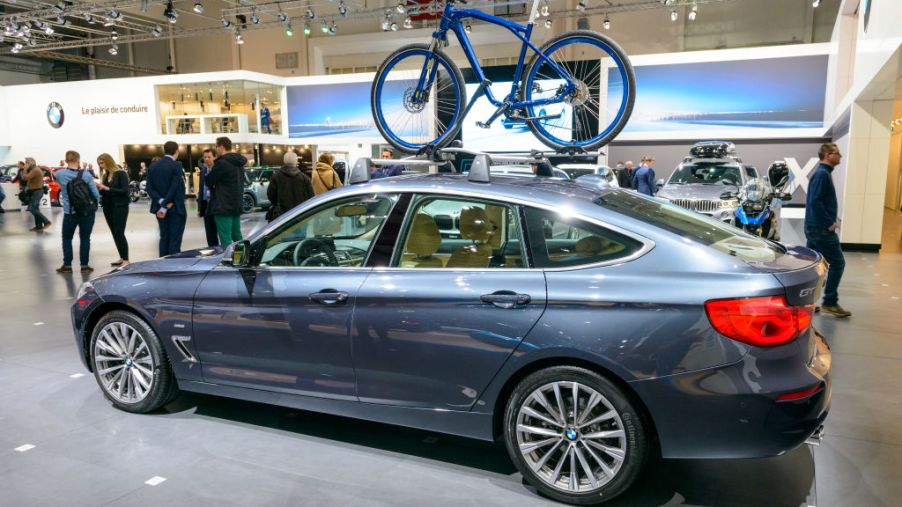
Here’s the Right Way to Tie Things to Your Roof Rack
Improper tie-down practices are all too common and many accidents and injuries happen because someone didn’t take their time loading cargo on the roof of the car. It’s important to use the right tie-downs and place the item correctly on the roof rack if you want to avoid damaging your cargo or causing an accident.
By using proper methods, you can haul your cargo safely to your destination, without incident to the cargo or to anyone else on the road. Here’s a brief guide to help you learn some proper techniques for securing items to your roof rack.
Prepare to secure your load to the roof rack
Before securing the load to the roof of your car, evaluate the item you will haul. Your owner’s manual should say how much weight you can carry on the roof. Any item that exceeds the recommended weight limit, choose another hauling option, like a trailer.
For situations where the item is longer than the roof of your car, placement will be extremely important. If it’s only a foot or so longer than the roof, line up the item so it starts at the forward part of the roof and hangs off over the back. Items that hang over the windshield will cause updrafts, which could send the item up and away from the roof. It will either damage the vehicle, the cargo or fly into traffic causing an accident.
If you have an item that must hang over both the front and back of the car, you will need to take extra care. For example, you may want to get that large Christmas tree home by hauling it on top of your car. Secure it like any other cargo, but you must anchor the front and back of the tree to each end of the vehicle.
Using a metal structure, you should be able to anchor the rear easily. The front, however, might need hood loops that attach underneath the hood on each side. You can then anchor the front to the loops to prevent updrafts.
Types of roof racks and how to place items on them
The roof rack you have will determine the best way to secure the item you want to haul. There are three main types of racks you may encounter with your vehicle.
The first one is your basic naked roof or no rack at all. If you find yourself in this situation, you will need to secure the item by using a rope or long tie-down that will go over the item and through the inside of the car. You should avoid going through an open window, though. It’s best to use a thinner piece of rope and go through an open door and then shut the doors on top of it.
The second option is the side racks. On each side of the roof, you’ll see a rack that runs the length of the roof of the vehicle. Use a tie-down that wraps around the item and the rails.
With the third option, crossbars with side rails, you can secure an item to the side rails and run tie-downs from front to back securing them to the crossbars.
What types of tie-downs work best
There are plenty of options for securing your cargo. However, not all of them are good to use. Some work better in certain situations than others and some you should avoid at all costs. Let’s look at the more common tie-downs you might come across at the store.
Ratchet tie-downs
Avoid these, if possible. These can easily put too much pressure on your cargo, causing damage to it or your car. If you must use them, be careful not to overtighten.
Bungee cord straps
These aren’t a good option either. When driving at normal speed, these straps can flex and bounce, causing them to shift the cargo load. You risk the load shifting too much, causing it to fly off the car and into traffic.
Web strapping
These are strong straps that come with a fastening buckle. You can thread through the other end of the strap and lock it in place, securing your load.
Rope
A rope is always good for tying down cargo. Just make sure you’re using some heavy-duty knots to prevent slippage and untying while you’re driving down the road.
What to do after securing cargo to the roof
Once you have the cargo secured, there are still a couple more things to do. To increase your chances for a safe haul, go around the car, checking to be sure you have secured each tie-down tightly. Make sure the item doesn’t shift around easily, and it’s placed properly on the roof of the car. If you used a rope, check that the knots are secure.
If you’re going on a long drive, check the cargo again after going about five miles. Any areas that need addressing will show up once the cargo has gotten used to the highway or interstate driving. Adjust your tie-downs as needed. Continue to check it every time you stop for gas or restroom breaks.
Taking your time to make sure you have properly tied the cargo to your roof rack to help improve safer driving practices on the road.


